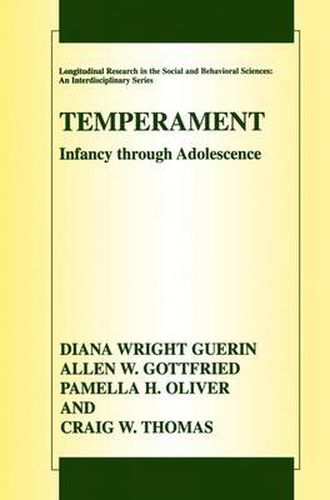Readings Newsletter
Become a Readings Member to make your shopping experience even easier.
Sign in or sign up for free!
You’re not far away from qualifying for FREE standard shipping within Australia
You’ve qualified for FREE standard shipping within Australia
The cart is loading…






This title is printed to order. This book may have been self-published. If so, we cannot guarantee the quality of the content. In the main most books will have gone through the editing process however some may not. We therefore suggest that you be aware of this before ordering this book. If in doubt check either the author or publisher’s details as we are unable to accept any returns unless they are faulty. Please contact us if you have any questions.
The Fullerton Longitudinal Study, launched in 1979, chronicled the development of over 100 children and their families from the children’s first birthday through their high school completion using a cross-informant/cross-context methodology. In this volume, the developmental course of children’s temperament from age 1.5 years through high school completion are documented. Using the model of temperament developed by Alexander Thomas, Stella Chess, and their colleagues in the New York Longitudinal Study (NYLS) and standardized temperament inventories collected repeatedly across infancy, childhood, and adolescence. The authors of this text systematically present their findings investigating the following issues: stability and continuity of the nine NYLS temperament dimensions based on parent reports and, during adolescence, both parent and self-reports; concurrent and cross-time relations between temperament dimensions and behaviour problems in home and school contexts; temperament dimensions as predictors and consequences of intelligence; relations between temperament dimensions and children’s education, including academic achievement, classroom behaviour, grade point average, and self-appraisals of academic competence and motivation; home environment and family relationship correlates of temperament; the long-term developmental trajectories of infants with extreme temperament characteristics, including temperamental, behavioural, intellectual, academic, and home/family outcomes. The book should prove an important resource for developmental researchers, clinicians, educators, students, and others interested in how individual differences in children’s behavioural styles develop and relate to their development.
$9.00 standard shipping within Australia
FREE standard shipping within Australia for orders over $100.00
Express & International shipping calculated at checkout
This title is printed to order. This book may have been self-published. If so, we cannot guarantee the quality of the content. In the main most books will have gone through the editing process however some may not. We therefore suggest that you be aware of this before ordering this book. If in doubt check either the author or publisher’s details as we are unable to accept any returns unless they are faulty. Please contact us if you have any questions.
The Fullerton Longitudinal Study, launched in 1979, chronicled the development of over 100 children and their families from the children’s first birthday through their high school completion using a cross-informant/cross-context methodology. In this volume, the developmental course of children’s temperament from age 1.5 years through high school completion are documented. Using the model of temperament developed by Alexander Thomas, Stella Chess, and their colleagues in the New York Longitudinal Study (NYLS) and standardized temperament inventories collected repeatedly across infancy, childhood, and adolescence. The authors of this text systematically present their findings investigating the following issues: stability and continuity of the nine NYLS temperament dimensions based on parent reports and, during adolescence, both parent and self-reports; concurrent and cross-time relations between temperament dimensions and behaviour problems in home and school contexts; temperament dimensions as predictors and consequences of intelligence; relations between temperament dimensions and children’s education, including academic achievement, classroom behaviour, grade point average, and self-appraisals of academic competence and motivation; home environment and family relationship correlates of temperament; the long-term developmental trajectories of infants with extreme temperament characteristics, including temperamental, behavioural, intellectual, academic, and home/family outcomes. The book should prove an important resource for developmental researchers, clinicians, educators, students, and others interested in how individual differences in children’s behavioural styles develop and relate to their development.